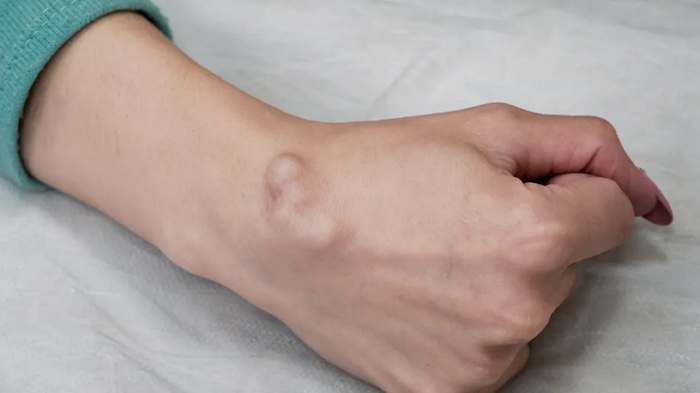
If you develop an unsightly lump on your wrist or finger, chances are you have a ganglion cyst.
Ganglion cysts are not cancerous. However, they’re often unsightly and can cause hand and wrist pain, which motivates patients to seek treatment.
Though ganglion cysts are common, they aren’t well-known, so here’s what you need to know.
Ganglion Cysts Explained
Cysts are sac-like structures that can appear anywhere in your body. Ganglion cysts, however, specifically develop over a joint or tendon. They’re filled with thick synovial fluid and often create an obvious, unsightly bulge under your skin.
Most ganglion cysts develop on the top of the wrist. However, you can end up with one on the bottom of your wrist or at the base of a finger on the palm side of your hand. Though less common, ganglion cysts may also occur in the first knuckle on the top side of a finger.
Ganglion Cyst Causes
Ganglion cysts typically develop gradually because of repetitive movement. As you frequently make the same motions with your wrist and fingers, micro-injuries occur in the structures that produce synovial fluid.
Your finger and wrist joints are lined by synovial membranes, and tendons are surrounded by a protective synovial membrane called a sheath.
These membranes produce and release synovial fluid that lubricates the joint or tendon and allows free movement. Ganglion cysts form as an area of the membrane weakens or degenerates.
Ganglion Cyst Symptoms
Ganglion cysts vary in size and symptoms. A small cyst may not be visible, or it may create a slight bulge without causing symptoms.
Large cysts are highly visible and cause pain and tenderness. You may experience severe hand pain and/or weakness if the cyst pushes against a nerve. A large cyst can also interfere with your ability to move and use your hand and wrist.
Most patients find that their symptoms get worse when they use the wrist or affected finger.
Ganglion Cyst Treatment
If your cyst is small and you don’t have symptoms, we may take a wait-and-see approach because ganglion cysts sometimes go away on their own. We may recommend wearing a splint to prevent activity that would enlarge the cyst.
When you have pain, limited movement, or an unsightly cyst, your treatment may include aspiration or surgery:
Aspiration
During an aspiration, we numb the area with a local anesthetic and use a needle to withdraw the fluid inside the cyst. Aspiration isn’t always possible if the cyst is too close to a blood vessel. Otherwise, it’s the first treatment we recommend for most ganglion cysts.
After aspiration, you have about a 50-50 chance of the cyst returning. If the cyst reappears, a follow-up aspiration can produce permanent results.
Surgical Removal
If your ganglion cyst presses against nerves or blood vessels, we may recommend surgical cyst removal as your first treatment option. Surgical excision, or cutting out the cyst, is the only other treatment option when an aspirated cyst keeps recurring.
Ganglion cysts can reappear even after surgical removal. However, the risk is much smaller compared with aspiration.
Precision Pain Care and Rehabilitation has two convenient locations in Richmond Hill – Queens and New Hyde Park – Long Island. Call the Queens office at (718) 215-1888, or (516) 419-4480 for the Long Island office, to arrange an appointment with our Interventional Pain Management Specialist, Dr. Jeffrey Chacko.













